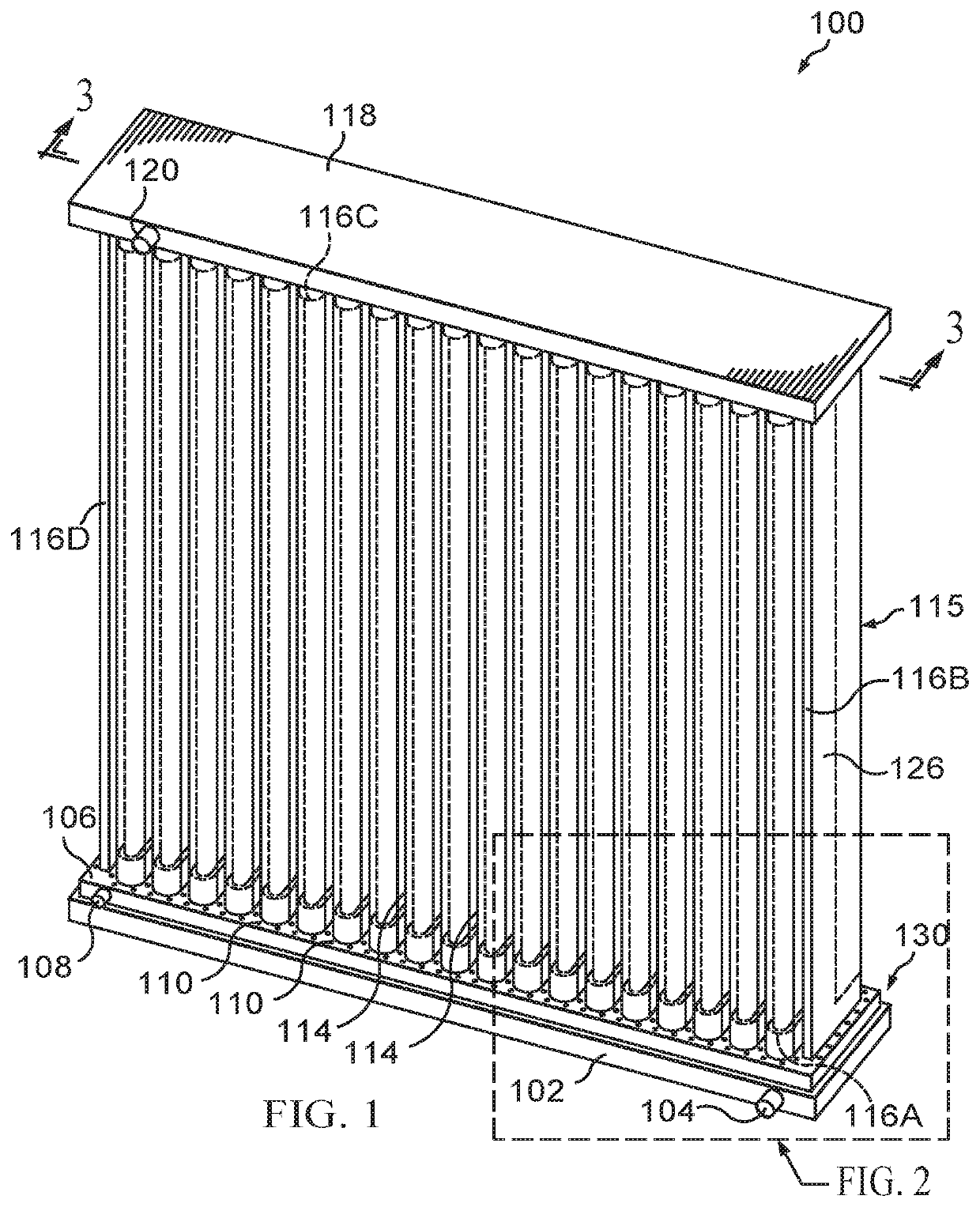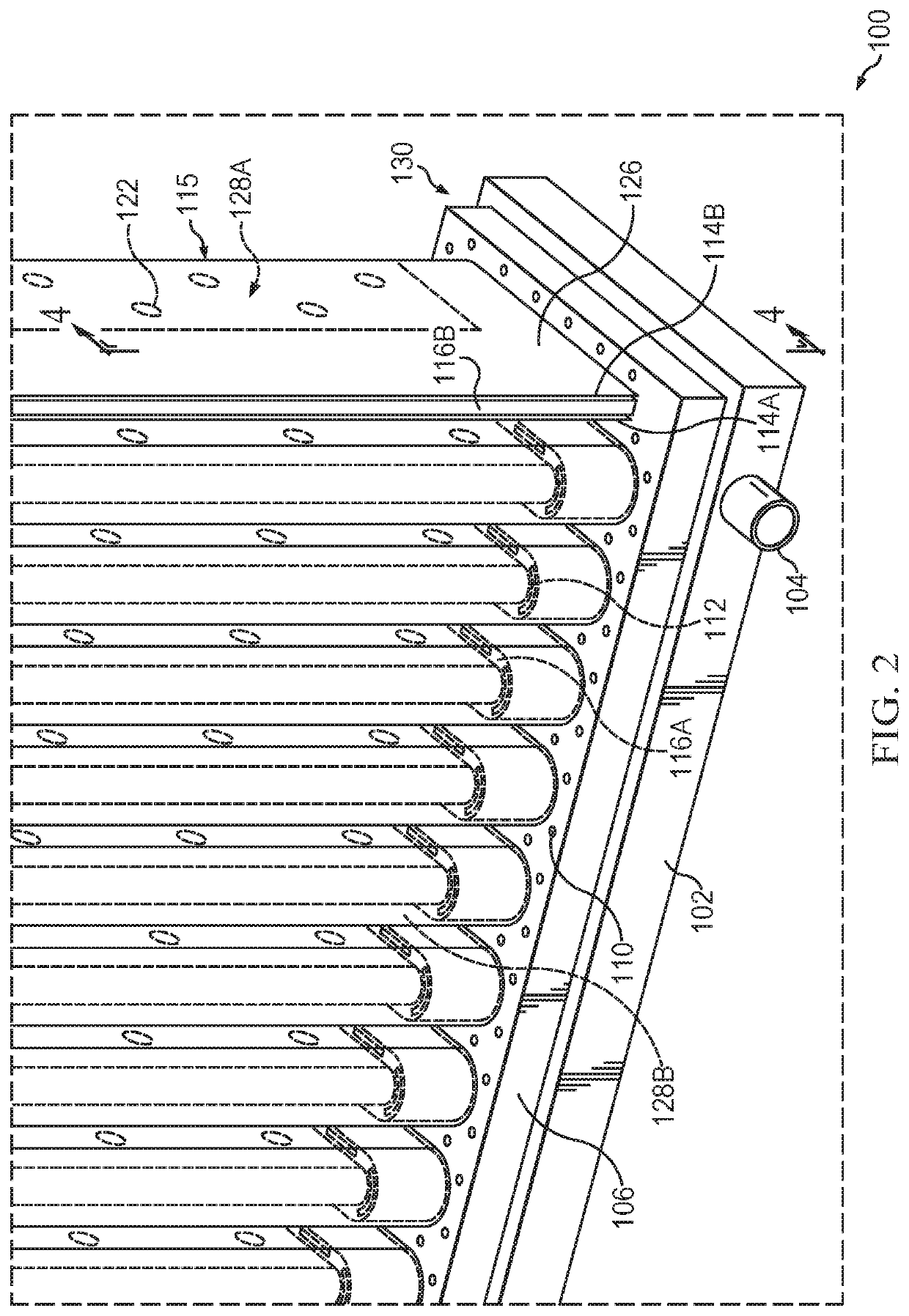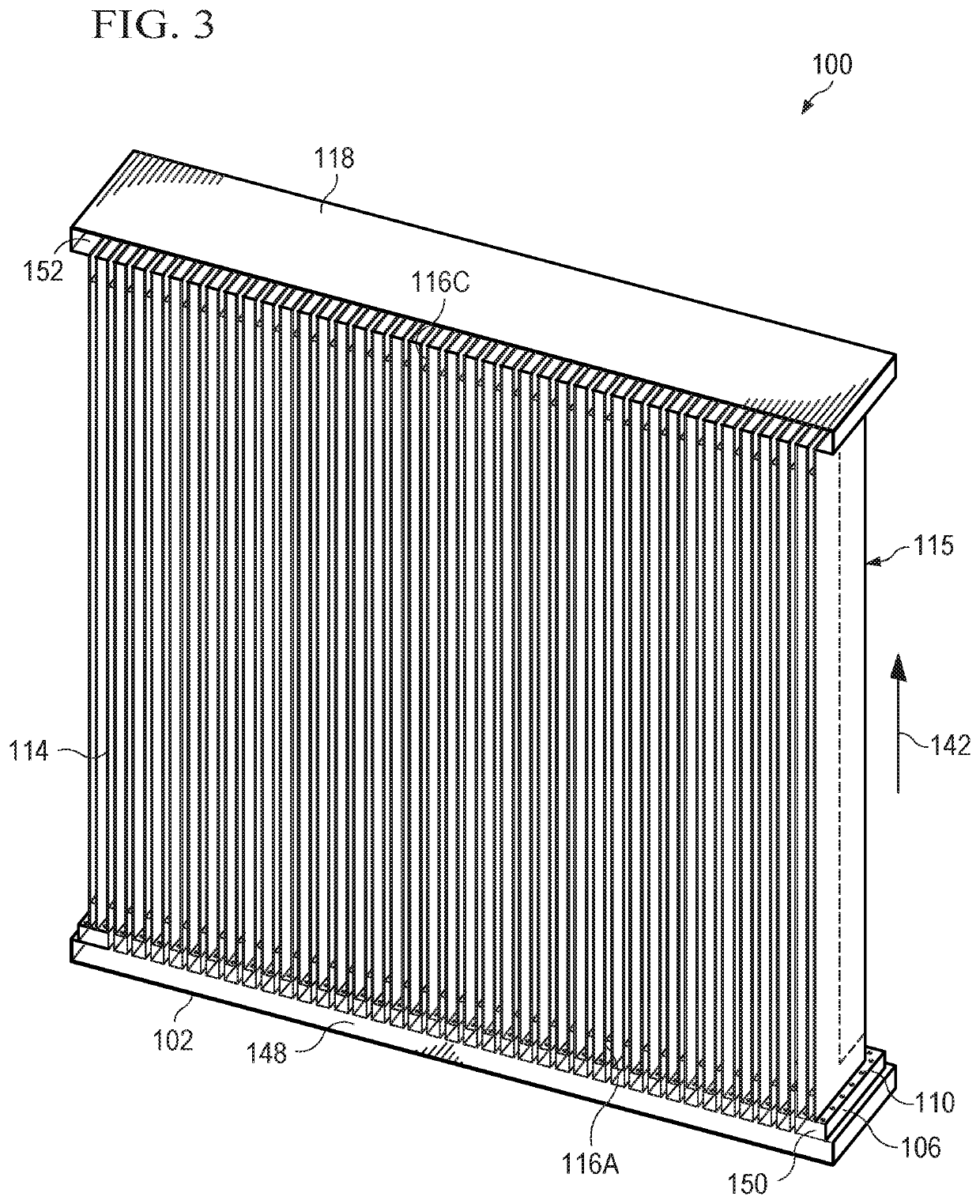Compact high-throughput device for water treatment
a high-throughput, compact technology, applied in water/sludge/sewage treatment, distillation, membranes, etc., can solve the problems of large inactive membrane area, low membrane packing density, and limited fresh water sources or rainwater, so as to reduce the inactive membrane area, prevent leakage, and increase the production capacity of a submerged module
- Summary
- Abstract
- Description
- Claims
- Application Information
AI Technical Summary
Benefits of technology
Problems solved by technology
Method used
Image
Examples
example 1
Calculations for Disclosed Corrugated Design
[0121]The design of the disclosed corrugated membrane plate and frame design was optimized using mathematical formulas derived from the geometric shapes of the corrugated membrane shown in FIGS. 8A-8D.
[0122]FIG. 8A shows a top view of a corrugated membrane sheet with a total number of turns equal to n. FIG. 8B is an enlargement of a corrugated turn on the central membrane plate. FIG. 8C is schematic of a front view of the membrane for the disclosed module. FIG. 8D schematic of a side view of the membrane for the disclosed module. With reference to FIGS. 8A-8D, the equations for calculating the total effective membrane area in the disclosed design are shown below, where:[0123]A1=Effective Membrane Area in the Corrugated Design[0124]Le=Effective length of the membrane sheets, excluding any attached lengths[0125]n=Number of turns per membrane element[0126]s=Spacing between turns[0127]t=Thickness of membrane plate frame on which two sheets of ...
example 2
Calculations for Conventional Flat Plate Design
[0159]In order to compare the total effective membrane areas between the disclosed submersible module (corrugated design) and a conventional plate and frame design having the same dimensions and footprint; the overall height, width and depth of the modules in both designs are kept equal. The spacing and thickness of the membrane plates are also kept the same between the two designs when calculating effective membrane areas.
[0160]FIG. 9A shows a schematic for the top view of a conventional design with flatsheet membranes with a total number of membranes equal to m. FIG. 9B is schematic of a front view of a membrane sheet for a conventional module. FIG. 9C is a schematic of a side view of membranes for a conventional module. With reference to FIG. 9A-9C, the equations for calculating the total effective membrane area in a conventional design are shown below, where:[0161]A2=Total effective membrane area per module in the conventional desig...
example 3
Calculations for Intermediate Design
[0174]For comparison, effective membrane area of an intermediate design was calculated. In the intermediate design, flat membrane plates would run along the shorter dimension of the module, instead of the longer side as in the conventional design, and would have the same dimensions and footprint; with the same overall height, width and depth used in the calculations for the disclosed submersible design and the conventional design, in order to provide a direct comparison of the membrane area. The intermediate design considered would have the same number of sheets as the number of turns on the corrugated design, but would have attached edges on all sides of the membrane sheets and no corrugations.
[0175]FIG. 10A shows a schematic for the top view of an intermediate design membrane sheet with a total number of membranes equal to m. FIG. 10B is schematic of a front view of membranes for an intermediate design. FIG. 10C is a schematic of a side view of ...
PUM
| Property | Measurement | Unit |
|---|---|---|
| area | aaaaa | aaaaa |
| area | aaaaa | aaaaa |
| pressure | aaaaa | aaaaa |
Abstract
Description
Claims
Application Information
 Login to View More
Login to View More - R&D
- Intellectual Property
- Life Sciences
- Materials
- Tech Scout
- Unparalleled Data Quality
- Higher Quality Content
- 60% Fewer Hallucinations
Browse by: Latest US Patents, China's latest patents, Technical Efficacy Thesaurus, Application Domain, Technology Topic, Popular Technical Reports.
© 2025 PatSnap. All rights reserved.Legal|Privacy policy|Modern Slavery Act Transparency Statement|Sitemap|About US| Contact US: help@patsnap.com



